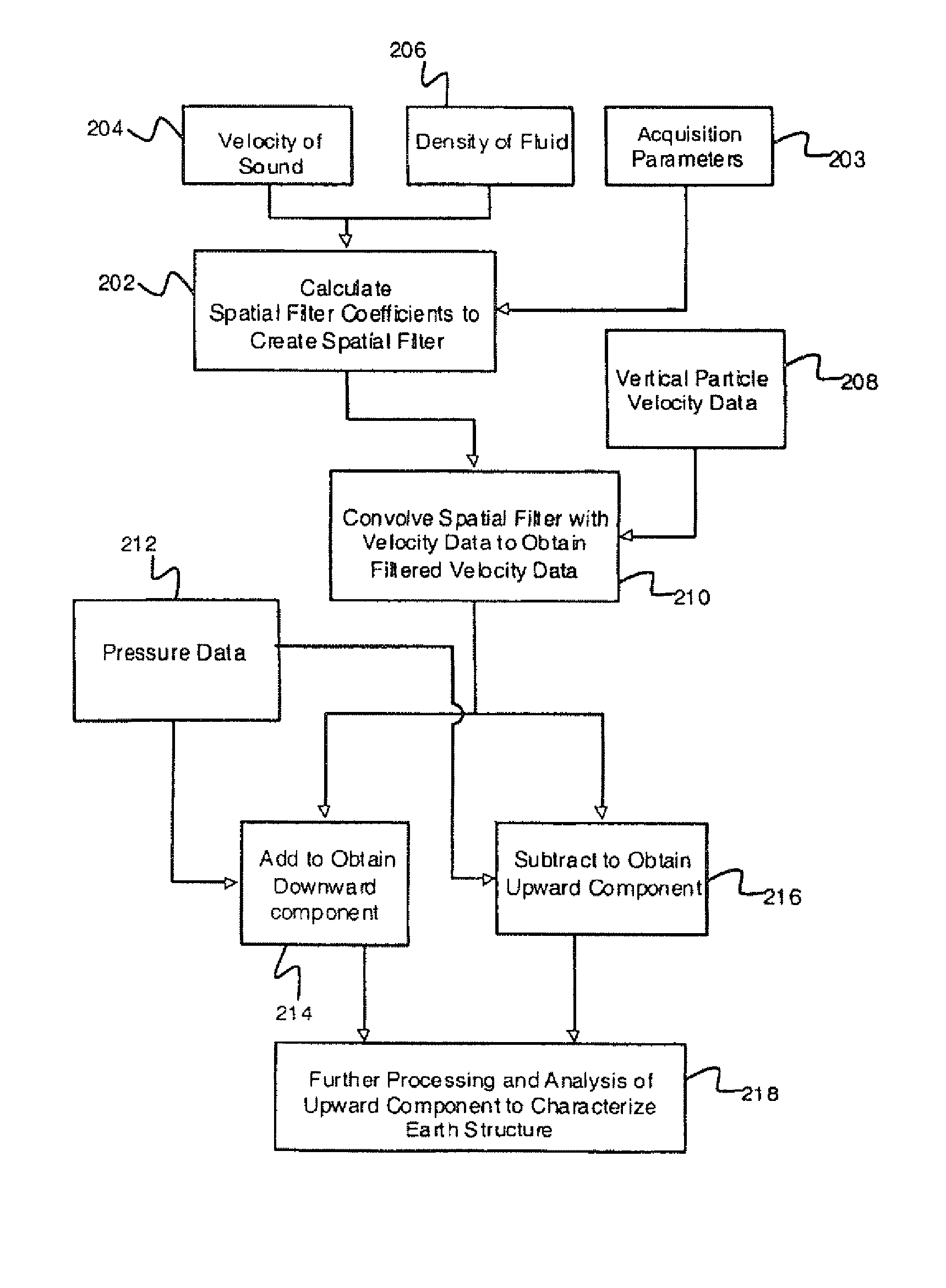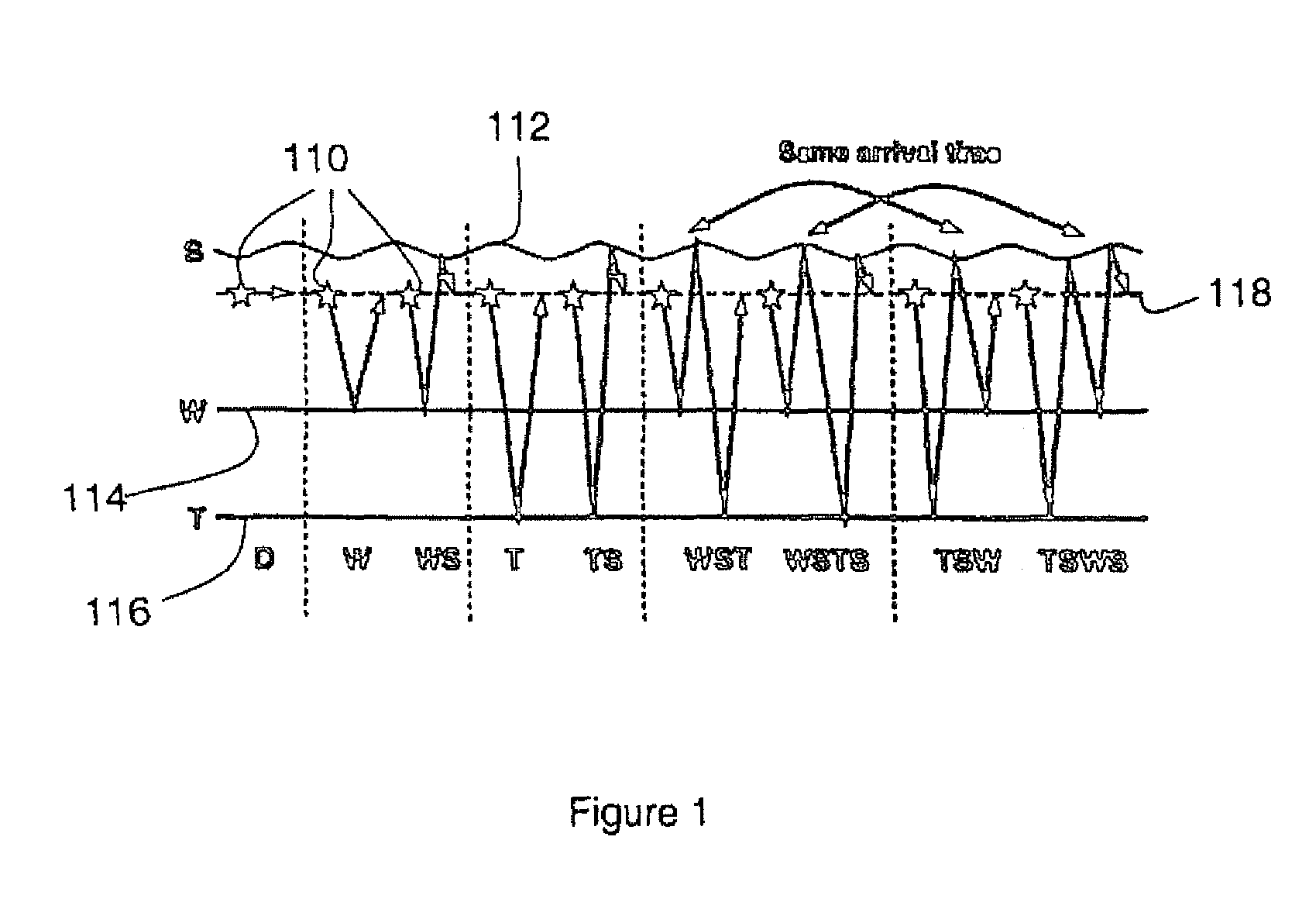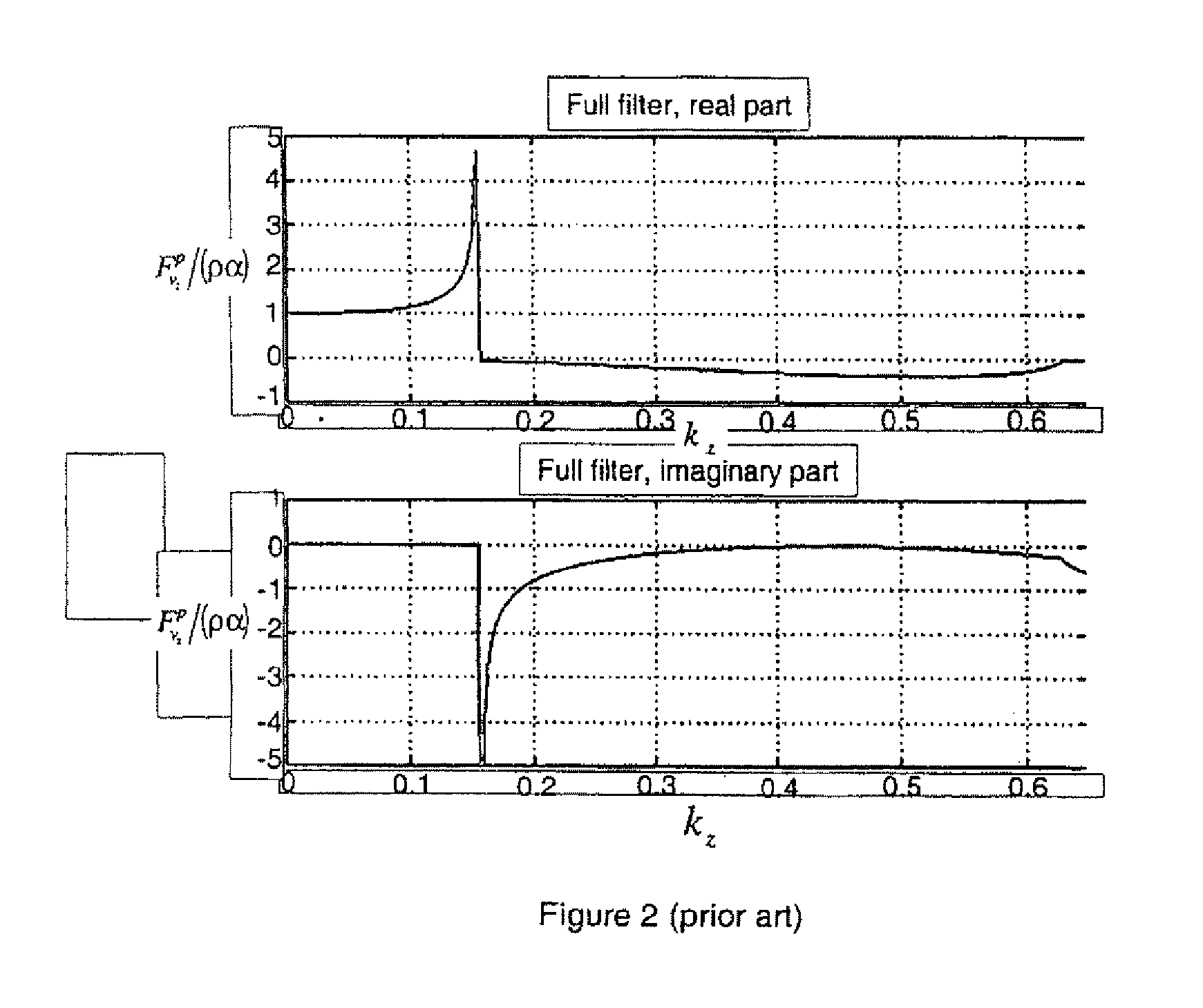Method and system for reducing effects of sea surface ghost contamination in seismic data
a technology of seismic data and ghost reflection, applied in the field of reducing the effects of sea surface ghost reflection in seismic data, can solve the problems of low apparent velocity, inability to treat energy with low apparent velocity (for instance s-waves or scholte waves at the seafloor), and inability to properly treat energy with low apparent velocity, so as to reduce the effect of downward propagating reflected and scattered acoustic energy travelling and reduce the effect in seismic data
- Summary
- Abstract
- Description
- Claims
- Application Information
AI Technical Summary
Benefits of technology
Problems solved by technology
Method used
Image
Examples
Embodiment Construction
[0035]FIG. 1 is a schematic diagram showing reflections between a sea surface (S), sea floor (W) and a target reflector (T). Various events that will be recorded in the seismogram are shown and are labelled according to the series of interfaces they are reflected at. The stars indicate the seismic source and the arrowheads indicate the direction of propagation at the receiver. Events ending with ‘S’ were last reflected at the rough sea surface and are called receiver ghost events. Down-going sea-surface ghost reflections are an undesirable source of contamination, obscuring the interpretation of the desired up-going reflections from the earth's sub-surface.
[0036]Rough seas are a source of noise in seismic data. Aside from the often-observed swell noise, further errors are introduced into the reflection events by ghost reflection and scattering from the rough sea surface. The rough sea perturbed ghost events introduce errors that are significant for time-lapse seismic surveying and t...
PUM
 Login to View More
Login to View More Abstract
Description
Claims
Application Information
 Login to View More
Login to View More - R&D
- Intellectual Property
- Life Sciences
- Materials
- Tech Scout
- Unparalleled Data Quality
- Higher Quality Content
- 60% Fewer Hallucinations
Browse by: Latest US Patents, China's latest patents, Technical Efficacy Thesaurus, Application Domain, Technology Topic, Popular Technical Reports.
© 2025 PatSnap. All rights reserved.Legal|Privacy policy|Modern Slavery Act Transparency Statement|Sitemap|About US| Contact US: help@patsnap.com



